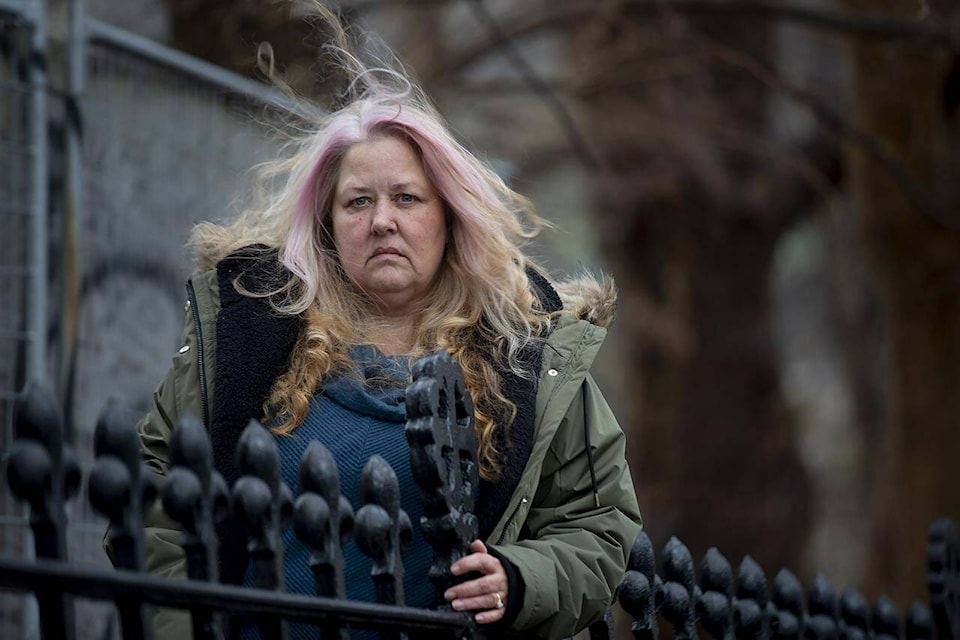In a theatre in St. John║”ą▀▓▌蹊┐╦∙Ös, N.L., a murmur spreads through the audience as people timidly raise their hands. They have been asked if they saw their own stories reflected in the film they just watched ║”ą▀▓▌蹊┐╦∙ö ║”ą▀▓▌蹊┐╦∙£A Quiet Girl.║”ą▀▓▌蹊┐╦∙Ø
The National Film Board documentary by Montreal director Adrian Wills follows him as he searches for his biological mother in her home province of Newfoundland and Labrador. Each step closer to his mother takes him deeper into the history of adoption in the province, where many unwed pregnant women in deeply Christian towns surrendered their babies to be brought up by someone else.
║”ą▀▓▌蹊┐╦∙£What people said to us afterwards was, ║”ą▀▓▌蹊┐╦∙śMy God, this is my cousin║”ą▀▓▌蹊┐╦∙Ös story, this is my sister║”ą▀▓▌蹊┐╦∙Ös story, this is our story,║”ą▀▓▌蹊┐╦∙Ö║”ą▀▓▌蹊┐╦∙Ø Wills said in a recent interview after screenings in central Newfoundland. ║”ą▀▓▌蹊┐╦∙£It was really emotional ║”ą▀▓▌蹊┐╦∙” so many people want to tell you their stories.║”ą▀▓▌蹊┐╦∙Ø
Many more of those stories need to be told, said Anne Sheldon, who runs a Facebook group called Newfoundland and Labrador Adoptees. Each month there are many new posts from adopted people born in the ║”ą▀▓▌蹊┐╦∙Ö50s, ║”ą▀▓▌蹊┐╦∙Ö60s and ║”ą▀▓▌蹊┐╦∙Ö70s, looking for their biological family members in Newfoundland. The group has more than 14,000 members.
The province║”ą▀▓▌蹊┐╦∙Ös painful history of adoption has largely been kept in the dark, she said. She hopes Wills║”ą▀▓▌蹊┐╦∙Ös film will help change that.
In ║”ą▀▓▌蹊┐╦∙£A Quiet Girl,║”ą▀▓▌蹊┐╦∙Ø Wills learns his biological mother became pregnant with him when she was 18, in 1972. Her family at the time was poor and devout. She gave birth to him in a hospital in St. John║”ą▀▓▌蹊┐╦∙Ös.
║”ą▀▓▌蹊┐╦∙£I went in to see her and she was lying on her side and she was just looking at the wall,║”ą▀▓▌蹊┐╦∙Ø Ellen, his biological aunt, tells him in the film. ║”ą▀▓▌蹊┐╦∙£I went to the nursery and I asked to see (her baby). And the nurse came and she said, ║”ą▀▓▌蹊┐╦∙śI║”ą▀▓▌蹊┐╦∙Öm sorry, you can║”ą▀▓▌蹊┐╦∙Öt see that baby.║”ą▀▓▌蹊┐╦∙Ö║”ą▀▓▌蹊┐╦∙Ø
Jean Ann Farrell, the coordinator of Newfoundland Adoption Services in the 1970s, tells him that at any given time, there were ║”ą▀▓▌蹊┐╦∙£hundreds of babies║”ą▀▓▌蹊┐╦∙Ø available to adopt in the province. The provincial government even advertised the babies in newspapers.
Sheldon, 53, was adopted from Corner Brook, N.L., when she was three months old. Her biological mother lived about 180 kilometres away in Springdale, N.L., which, at the time, was a ║”ą▀▓▌蹊┐╦∙£very Pentecostal town,║”ą▀▓▌蹊┐╦∙Ø Sheldon said.
║”ą▀▓▌蹊┐╦∙£I don║”ą▀▓▌蹊┐╦∙Öt want to come across as harsh, but they very much looked down upon single, unwed mothers. You were more or less shunned,║”ą▀▓▌蹊┐╦∙Ø she said. ║”ą▀▓▌蹊┐╦∙£That║”ą▀▓▌蹊┐╦∙Ös why she had to leave Springdale and go to Corner Brook and give birth to me in secret, and then return.║”ą▀▓▌蹊┐╦∙Ø
Similar stories were playing out across Canada, in staggering numbers, according to Valerie Andrews, the executive director of Origins Canada, an Ontario-based non-profit supporting families separated by adoption. She║”ą▀▓▌蹊┐╦∙Ös also a PhD student in women║”ą▀▓▌蹊┐╦∙Ös studies at York University and author of the book, ║”ą▀▓▌蹊┐╦∙£White Unwed Mother: The Adoption Mandate in Postwar Canada.║”ą▀▓▌蹊┐╦∙Ø
She has pored over adoption data from across the country documenting the period from the 1940s to the 1970s, and she estimates at least 300,000 babies were surrendered for adoption in that time, often under intense societal and religious pressure.
It║”ą▀▓▌蹊┐╦∙Ös not entirely clear how many, if any, of the approximately 20,000 children taken from Indigenous mothers during the Sixties Scoop are included in that figure, because different provinces kept very different adoption statistics, she said.
Many unwed mothers were secretly shuttled away to the dozens of church-run ║”ą▀▓▌蹊┐╦∙£maternity homes║”ą▀▓▌蹊┐╦∙Ø where they lived until their babies were born. They would surrender their infants and go home, told to never think or speak of their child again.
Andrews herself became pregnant at 16 and went to a maternity home in Toronto in 1969. She was reunited with her son three decades later.
║”ą▀▓▌蹊┐╦∙£Many women now ║”ą▀▓▌蹊┐╦∙” are suffering in pain and secrecy,║”ą▀▓▌蹊┐╦∙Ø she said in an interview. ║”ą▀▓▌蹊┐╦∙£They║”ą▀▓▌蹊┐╦∙Öre unable to tell their families that they have this baby. Maybe you║”ą▀▓▌蹊┐╦∙Öve been married to a man for 60 years, you║”ą▀▓▌蹊┐╦∙Öre not going to tell him now, ║”ą▀▓▌蹊┐╦∙śOh, by the way.║”ą▀▓▌蹊┐╦∙Ö║”ą▀▓▌蹊┐╦∙Ø
That pain informs Sheldon║”ą▀▓▌蹊┐╦∙Ös approach to her Facebook group, where she insists people look for their families with compassion and care.
She said ║”ą▀▓▌蹊┐╦∙£A Quiet Girl║”ą▀▓▌蹊┐╦∙Ø has that compassion. It will help people see the complexity of adoption for the mother and the child, and it will help families separated by adoption better understand each other, she said.
The National Film Board said the film is expected to be released on its website in early 2024.
At the screening in St. John║”ą▀▓▌蹊┐╦∙Ös, the audience erupted into sustained applause when Wills said he had found belonging with his biological mother║”ą▀▓▌蹊┐╦∙Ös family, and as a Newfoundlander.
║”ą▀▓▌蹊┐╦∙£There is this sense that when people are adopted, that they║”ą▀▓▌蹊┐╦∙Öre supposed to just kind of go through life as if that didn║”ą▀▓▌蹊┐╦∙Öt occur,║”ą▀▓▌蹊┐╦∙Ø he said. ║”ą▀▓▌蹊┐╦∙£This shows there║”ą▀▓▌蹊┐╦∙Ös so much more complexity involved in this situation ║”ą▀▓▌蹊┐╦∙” that you can║”ą▀▓▌蹊┐╦∙Öt just move on and act like this hasn║”ą▀▓▌蹊┐╦∙Öt been a massive experience for everybody involved.║”ą▀▓▌蹊┐╦∙Ø
Sarah Smellie, The Canadian Press



